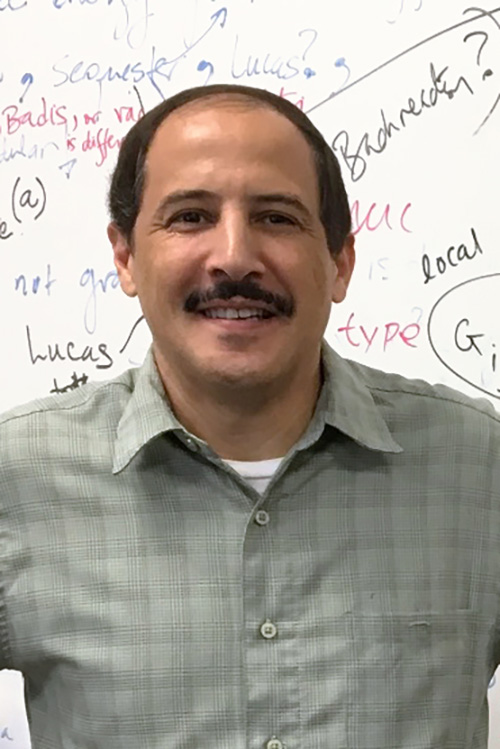Explorers of Space, Deep Earth Named AAAS Fellows for Stellar Work
By: Amanda Siegfried | Jan. 26, 2022
Two University of Texas at Dallas faculty members in the School of Natural Sciences and Mathematics have been elected 2021 fellows of the prestigious American Association for the Advancement of Science (AAAS).
Dr. Mustapha Ishak-Boushaki, professor of physics, and Dr. Robert Stern, professor of geosciences, are among 564 new fellows spanning 24 scientific disciplines who are being recognized for their scientifically and socially distinguished achievements. The organization expects to celebrate the new fellows during an in-person gathering later this year.
Since 1874, AAAS fellows have included scientists, engineers and innovators who have distinguished themselves across disciplines — from research, teaching and technology to administration in academia, industry and government to excellence in communicating and interpreting science.
“Being elected a AAAS fellow is among the most prestigious honors available to U.S. researchers and is well deserved for both Dr. Ishak-Boushaki and Dr. Stern,” said Dr. David Hyndman, dean of the School of Natural Sciences and Mathematics and the Francis S. and Maurine G. Johnson Distinguished University Chair.
Dr. Mustapha Ishak-Boushaki

Ishak-Boushaki was selected for his contributions to the field of theoretical cosmology, particularly for testing modifications to general relativity (gravity) at cosmological scales and for sustained excellence in teaching and mentoring of students.
Ishak-Boushaki’s research focuses broadly on the origin and evolution of the universe, including studies of cosmic acceleration, dark energy, gravity and gravitational lensing, and how these parameters affect cosmological models. He is a leading member of the Rubin Observatory Legacy Survey of Space and Time (LSST) Dark Energy Science Collaboration and the Dark Energy Spectroscopic Instrument (DESI) collaboration.
“Testing Einstein’s theory of gravity at the largest scales in the universe may have important implications for our understanding of the nature of space and time, as well as the origin of the acceleration of the expansion of the universe,” said Ishak-Boushaki, who, with colleagues from Princeton University, led a seminal study published in 2006 that established a new area of research in this field. “My students and I are excited to perform such tests using the incoming astronomical data from DESI and LSST surveys.”
A UT Dallas faculty member since 2005, Ishak-Boushaki has mentored dozens of graduate and undergraduate students, as well as high school students during summer internships, and has received several awards for teaching and mentoring excellence from the University.
“I am honored to receive this recognition from the AAAS for my scientific achievements as well as for teaching and mentoring students over the years, which is very fulfilling,” he said.
Dr. Robert Stern

Stern was honored for his contributions to the fields of geology, petrology, geochemistry and geochronology, and for his education and outreach activities.
A fellow of the Geological Society of America and of the American Geophysical Union, Stern has studied complex geological systems from the Pacific Ocean to the African desert. His research has led to a better understanding of how new subduction zones form and the evolution of plate tectonics throughout Earth’s history. Stern also leads the University’s participation in a joint U.S.-Japanese Mariana Trench research group, which, for several years, has involved faculty, research scientists and students in oceanographic field studies.
Stern joined the Department of Geosciences in 1982 and is a former department head. He also oversees the UTD GeoScienceStudio, where students and faculty make videos and animations about geoscience topics, current research and geoscience-related phenomena in the news.
“It is a great honor to be selected as a AAAS fellow in the same month that I celebrate my 40th year at UTD,” Stern said. “I am very proud of our university and how it has grown to serve the DFW region, and I am very grateful that UTD has supported the efforts of myself and my students to understand how the solid Earth system operates today and in the past.”
Media Contact:
Amanda Siegfried, UT Dallas, 972-883-4335, amanda.siegfried@utdallas.edu, or the Office of Media Relations, UT Dallas, (972) 883-2155, newscenter@utdallas.edu.





